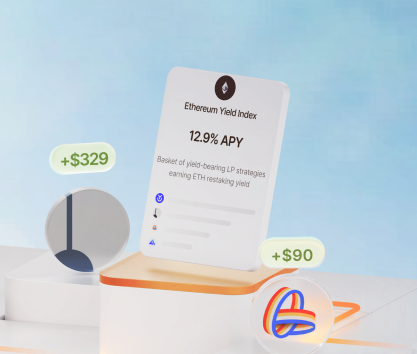While many crypto enthusiasts believe that building a balanced portfolio is all about selecting the right composition of assets, it is often even more important to understand the game of numbers. Identifying the right approach to capital allocation can be quite difficult for newbies in the world of finance. They make mistakes that can have devastating effects.
The DeFi ecosystem offers everyone an incredible variety of investment instruments. When untested strategies become accessible, it is crucial to limit your exposure and focus on determining how much to invest in crypto assets.
It is also imperative to keep in mind the high volatility of purely speculative digital assets and the impact of regulation that can negatively affect your earnings and the ability to use decentralized finance instruments.
A healthy percentage of the portfolio for crypto
There are many ratios that experienced investors suggest using for a balanced portfolio that can perform under various market circumstances. For instance, some financiers believe that using the 7/3 ratio is a good idea. Here, 70% of investable capital is dedicated to conservative assets with a robust long-term history of performance (fixed-income securities or real estate), while the remaining 30% is for the stock market and other speculative assets.
Since cryptocurrencies are still perceived as highly volatile and, hence, risky, the vast majority of classically trained analysts believe that the aforementioned 30% should be further broken down into a similar ratio, with 70% dedicated to stocks and just 30% to derivatives and crypto.
Conservative vs aggressive crypto investing
One thing that we have to remember is that these recommendations are given to newcomers. These are not money-making strategies. Even the biggest institutions with billions at stake focus primarily on riskier approaches.
The idea behind ratios that favor historically reliable asset classes is to keep investors safe when they are making investment decisions.
The DeFi ecosystem showcases some of the most flexible investment strategies. Investors can work with over 20 thousand different tokens, hundreds of unique derivatives offered by CEXes and some decentralized protocols, over 11 thousand protocols, and 14 thousand pools. While the whole crypto market is volatile, some assets are still more stable than others.
Conservative approaches are used by long-term investors who believe in the future of the industry. Here are some of them:
- Dollar-cost averaging in crypto is an approach that uses Distributed Cost Average approach to reduce the average acquisition price of assets in a portfolio. The core principle is to break down a single large purchase into a series of smaller ones and amass a large chunk of assets over a lengthy period. DCA is a viable strategy employed by many BTC enthusiasts.
- Staking on mainnets. Solana, Arbitrum, and, of course, Ethereum offer staking programs allowing users to actively participate in the validation process. If we look at PoS systems in a vacuum, we will notice that returns are quite low yet consistent. For example, ETH staking on the mainnet produced 4% on average in 2024, which is on par with US Treasury bonds (4.11%).
- Investing in Lending protocols. These are again sole rulers of the DeFi ecosystem, with the combined TVL of all tracked Lending protocols exceeding $39 billion as of the time of writing. Some of the largest and most popular protocols are Aave, JustLend, Compound, and others. Lending in the DeFi sector is overcollateralized, meaning that lenders can feel safe and receive sizeable returns.
Aggressive investors are seeking the best APY rates and fastest-growing digital assets. Since the vast majority of tokens that skyrocket are memecoins and pump-and-dump schemes, it is important to learn some crypto risk management strategies and focus on avoiding shady protocols and developer teams that seem to promise something too good to be true.
Here are some notable aggressive investment approaches commonly used in the DeFi ecosystem:
- Yield farming is still among the most rewarding investment methods in the decentralized finance sector. However, many protocols are either quite risky to use or offer rewards that barely cover investment costs. On the other hand, long-term investors may be interested in allocating capital to time-tested protocols offering rewards in native tokens. CurveDAO, Compound, and many others are good examples.
- Actively trading crypto can be a good solution for some retail traders interested in the DeFi ecosystem. The larger cryptocurrency market is quite dangerous for newcomers who may not have the necessary knowledge, experience, and confidence to trade assets effectively. However, automation platforms, signal providers, and other tools can be helpful.
When it comes to using some of the riskier strategies, it is important to educate yourself about crypto investment psychology. Some of the worst mistakes are made by people under emotional distress, pressure to perform, or fear. Focusing on researching investment options instead of following the crowd is incredibly important if you plan to preserve and increase wealth.
How to pick a good strategy?
Contemporary DeFi enthusiasts entering the ecosystem for the first time are overwhelmed with the incredible diversity of options presented to them by over 11 thousand tracked protocols, including some projects that enjoy praise from the community of influencers. Unfortunately, the vast majority of cryptocurrencies propped up by biased parties turn out to be scams or pump-and-dump schemes like the recent Mantra collapse.
Avoiding FOMO in cryptocurrency is one of the most important skills for any investor. It is important to remind yourself that the crypto industry has an awful lot of room to grow, and you won’t miss out by simply waiting for the right opportunity.
On the other hand, abstaining from investing in DeFi instruments altogether is also a bad idea. For starters, it is important to have some first-hand experience with various protocols. There are many other reasons to get into action as soon as possible, but you must be cautious.
Here is a good method of safe crypto allocation:
- Go to the Rivo Yield Marketplace and browse through many investment strategies picked by professionals.
- Select strategies that suit your preferences and risk style. The platform allows users to rank strategies by risk level.
- Read more about each of the strategies. A team of trained specialists at Rivo verifies each project and does all the due diligence on your behalf.
- Pick strategies that align with your long-term goals and do not expose you to too much to dangers of the crypto market.
Note that you can also talk to the Maneki AI agent. It will ask you several questions about your investment horizon and risk preferences before recommending strategies that will work best in your particular case. Maneki AI is one of the best autonomous agents in the DeFi ecosystem. It actually has useful utility and provides valuable services to users.
The future of crypto risk assessment
Choosing the right amount of capital to invest in cryptocurrencies can be incredibly difficult, even for experienced retail traders who have been around since the conception of Bitcoin. Prices can vary dramatically, with BTC often reaching over 50% average monthly volatility. The personal situation of each investor must be taken into consideration as well. Some people have regular emergencies that have to be taken care of. They will move in and out of the market systematically, exposing themselves to volatility risks.
On the other hand, platforms like Rivo help investors identify the best investment strategies and most efficient capital allocation methods. Check it out now and search for the best DeFi investments of your life!









